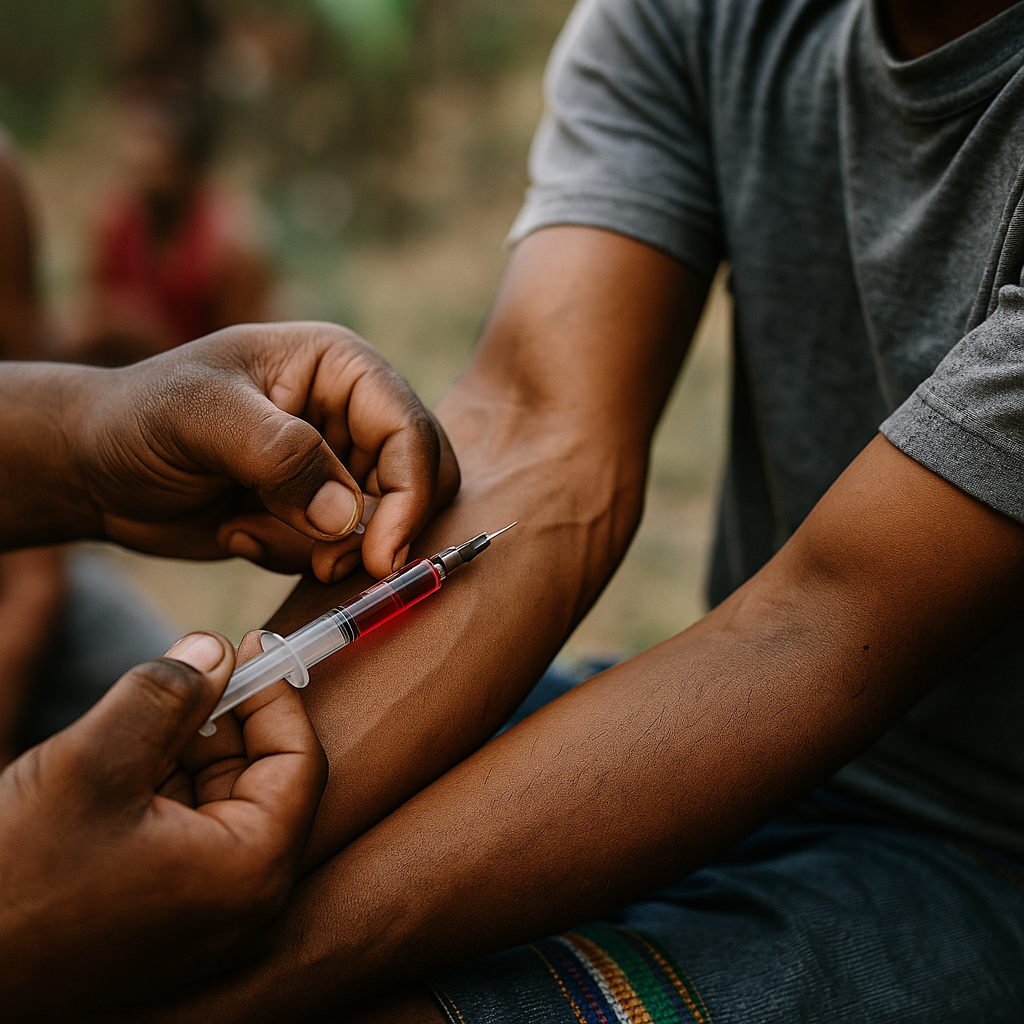The Pacific island nation of Fiji is facing a sharp increase in HIV infections — and a startling culprit has emerged: a form of blood‑sharing among people who inject drugs, commonly referred to as bluetoothing. This risky practice involves an individual injecting a drug (frequently methamphetamine), withdrawing a portion of their blood from the syringe, then passing that blood to another person to inject. (abc.net.au)
“Bluetoothing” effectively means that blood from one person is being transferred directly into another’s bloodstream, bypassing any screening or safeguards. The dangers are obvious: HIV, hepatitis B and C, and other bloodborne pathogens can spread instantly. (fijitimes.com.fj)
Recent reporting reveals:
- Over 1,000 new HIV cases were recorded in Fiji in 2024 — triple the number from 2023. (todaymediafiji.com)
- A substantial portion of these new infections is linked to intravenous drug use and unsafe injecting practices. (fbcnews.com.fj)
- Among younger users, bluetoothing is becoming normalized as a way to share the “high” when resources (drugs, syringes) are limited. (abc.net.au)
- Health officials in Fiji now consider the HIV trend a national emergency, with growing alarm over whether the health system can keep up. (todaymediafiji.com)
This trend is not entirely new — in Africa, a similar practice known as flashblood (or “flushblood”) has been documented, where individuals inject blood drawn from someone who recently used heroin or other injectable drugs. (en.wikipedia.org) But in Fiji, the phenomenon appears more systematic and widespread, closely tied to methamphetamine injection culture. (abc.net.au)
Why Bluetoothing Is Especially Dangerous for HIV Spread
There are several reasons why bluetoothing represents a particularly lethal vector for HIV transmission:
- Direct blood-to-blood transfer: Unlike sharing a needle, bluetoothing transfers partially processed blood directly — vastly increasing viral load risk if one participant is infected.
- No sterilization or filtering: Because the blood is injected immediately, there is no chance to sterilize or filter, and no barrier to pathogens entering another’s bloodstream.
- Multi‑person chain risk: One contaminated blood sample can be passed across multiple people, compounding the danger.
- Overlapping with unsafe injection behavior: Many bluetoothing networks also share syringes, reuse injection equipment, or lack safe disposal—heightening risk further.
- Lack of harm‑reduction infrastructure: Fiji has limited needle‑exchange programs and restricted access to clean injecting supplies, meaning users often resort to sharing what is available.
- Stigma and underreporting: Users may fear legal or social repercussions, preventing them from seeking testing, prevention services, or disclosure.
Given these factors, bluetoothing functions as a “superhighway” for HIV transmission among injecting drug‑user populations in Fiji and possibly elsewhere.
Key Strategies for Prevention & Harm Reduction
1. Expand Needle & Syringe Programs (NSPs)
Ensuring access to clean syringes drastically reduces injection-related HIV risk. In a context of bluetoothing, having separate, sterile injecting equipment is foundational.
2. Introduce or scale Safe Blood‑Sharing Alternatives
While full substitution of bluetoothing may be unrealistic immediately, creating safer sharing alternatives — such as supervised injection settings where blood transfer is discouraged — may reduce harm.
3. Provide Rapid HIV & Hepatitis Testing at Drug Use Sites
Mobile clinics, outreach vans, and peer-led services should offer on-site testing and early linkage to care, recognizing the high transmission risk in networks practicing bluetoothing.
4. Scale Up Opioid/Substance Use Treatment & Medication-Assisted Therapy
Treating underlying addiction reduces injecting frequency and associated high-risk behaviors.
5. Peer Education & Behavior Change Campaigns
Empower users with knowledge about bluetoothing’s risks, proper sterilization, safer strategies, and stigma reduction. Lived experience voices are vital.
6. Strengthen Surveillance, Data Collection & Monitoring
Because bluetoothing likely causes underreported infections, enhanced epidemiological surveillance and mapping of injecting networks is needed.
7. Improve Legal & Policy Environments
Decriminalizing syringe possession, allowing nonprescription access, and protecting harm‑reduction services from law enforcement interference are crucial for uptake.
8. Integrate HIV Treatment & Prevention in Drug Services
Ensure that HIV care, antiretroviral therapy, and prevention (e.g. pre‑exposure prophylaxis, or PrEP) are offered in drug treatment settings.
Conclusion
The emergence of bluetoothing as a method of drug use and blood sharing presents a grave threat to HIV control efforts not only in Fiji but potentially in other regions where injecting drug use is rising. Because it involves direct blood transfer, it accelerates viral spread in ways that traditional needle-sharing alone cannot match. To combat this, AIDS.org and its partners must promote comprehensive harm‑reduction strategies, scale access to clean injection tools, expand testing and treatment, and advocate for supportive legal frameworks.
The window for intervention remains tight. Without urgent, coordinated action, bluetoothing may amplify HIV into deeper, harder-to-control epidemics — reversing decades of progress.
This content is not medical advice. For any health issues, always consult a healthcare professional. In an emergency, call 911 or your local emergency services.



